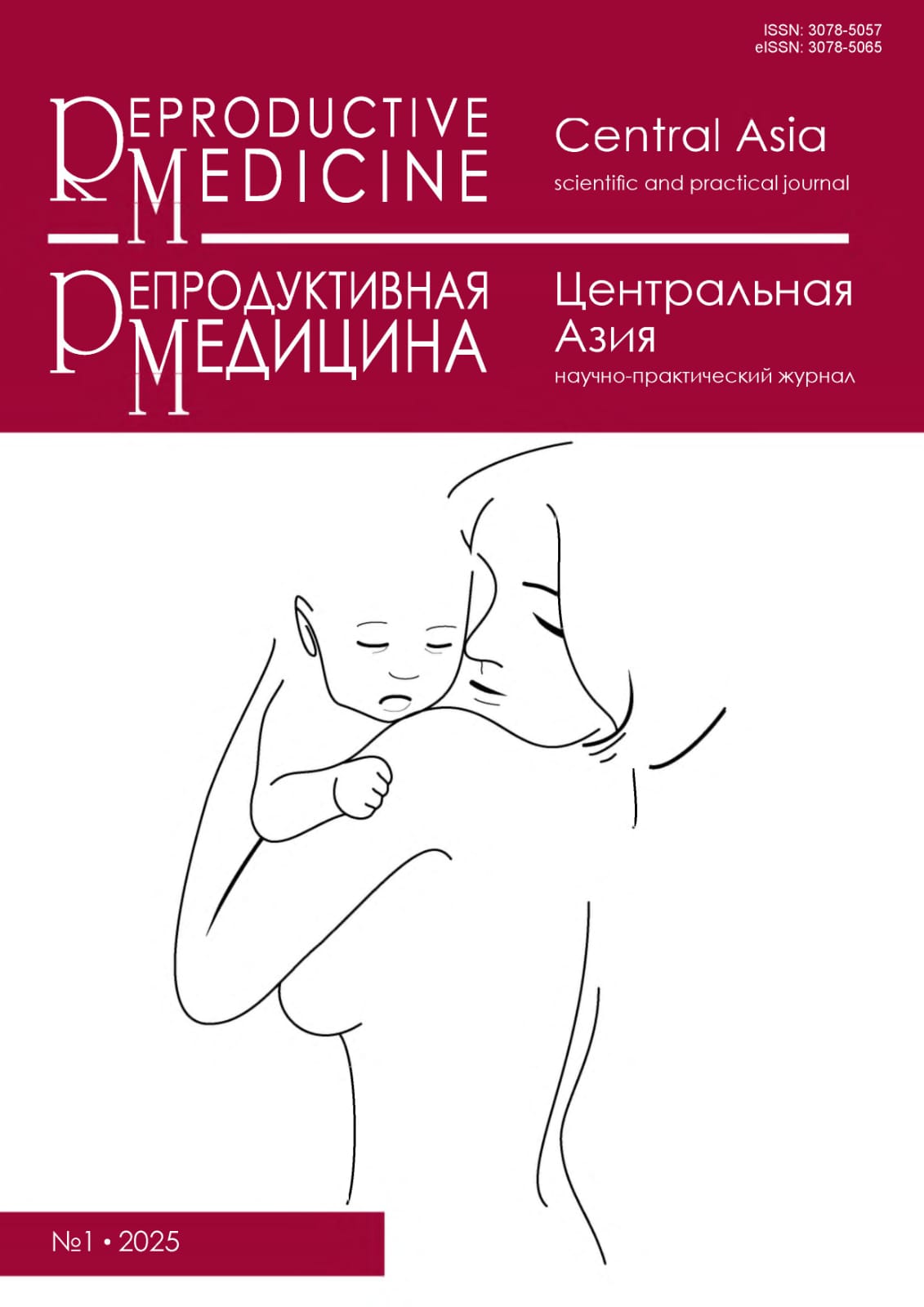Малоинвазивные технологии в стабилизации респираторного статуса недоношенных детей: обзор литературы
DOI:
https://doi.org/10.37800/RM.1.2025.459Ключевые слова:
недоношенные дети, респираторная недостаточность, малоинвазивные технологии, LISA, УЗИ лёгких, УЗИ сердца, ингаляция оксида азотаАннотация
Актуальность: Высокая частота рождения недоношенных детей остаётся серьёзной проблемой здравоохранения, поскольку они требуют специализированной помощи. Стабилизация состояния в первые минуты жизни критична для выживаемости и здоровья.
Данный обзор литературы посвящен стабилизации респираторного статуса недоношенных детей с использованием малоинвазивных технологий. Установлено, что такие методы, как подогреваемая и увлажнённая высокопоточная носовая канюля, метод LISA (менее инвазивное введение сурфактанта), УЗИ лёгких, УЗИ сердца в режиме POCUS (Point-of-Care Ultrasound), электрокардиография и ингаляция оксида азота, способствуют снижению респираторных осложнений и улучшению долгосрочных исходов.
Цель исследования – провести анализ литературных источников и прокомментировать современные подходы к стабилизации респираторного статуса с применением малоинвазивных технологий у недоношенных детей вскоре после рождения, а также выявить недостаточно изученные аспекты их применения в неонатальной практике.
Материалы и методы: Проведён обзор научных источников из PubMed, Scopus, Web of Science, eLibrary за 2014-2024 годы. Отобраны исследования, оценивающие эффективность малоинвазивных методов респираторной поддержки.
Результаты: Анализ подтвердил, что малоинвазивные технологии способствуют продолжительной оксигенации, снижению заболеваемости бронхолёгочной дисплазией и внутрижелудочковыми кровоизлияниями, а также точной диагностике кардиореспираторных расстройств.
Заключение: Применение малоинвазивных технологий снижает потребность в инвазивных вмешательствах, повышает выживаемость и улучшает долгосрочные результаты у недоношенных детей, что требует индивидуализированного подхода.
Библиографические ссылки
World Health Organization. Preterm birth. 2020 [cited 2025 Mar 13]. Available from:
https://www.who.int/news-room/fact-sheets/detail/preterm-birth
Stoll BJ, Nellie I Hansen, Edward F Bell, Seetha Shankaran, Abbot R Laptook, Michele C Walsh, Ellen C Hale, Nancy S Newman, Kurt Schibler, Waldemar A CarloShampa Saha, Abhik Das, Rosemary D Higgins; Eunice Kennedy Shriver National Institute of Child Health and Human Development Neonatal Research Network. Neonatal Outcomes of Extremely Preterm Infants from the NICHD Neonatal Research Network. Pediatrics. 2015;135(1):1-9.
https://doi.org/10.1542/peds.2009-2959
Lemyre B, Laughon M, Bose C, Davis PG. Early nasal intermittent positive pressure ventilation (NIPPV) versus early nasal continuous positive airway pressure (NCPAP) for preterm infants. Cochrane Database Syst Rev. 2023; CD005384.
https://doi.org/10.1002/14651858.CD005384.pub2
Berbenetz N, Wang Y, Brown J, Godfrey C, Ahmad M, Vital FMR, Lambiase P, Banerjee A, Bakhai A, Chong M. Non-invasive ventilation for preterm infants. Cochrane Database Syst Rev. 2016;2016(3).
https://doi.org/10.1002/14651858.CD005351.pub4
Kurepa D, Perveen S, Lipener Y, Kakkilaya V. The use of less invasive surfactant administration (LISA) in the United States with review of the literature. J Perinatol. 2019;39(7):426-432.
https://www.nature.com/articles/s41372-018-0302-9
Gregorio-Hernández R, Pérez-Pérez A, Alonso-Ojembarrena A, Arriaga-Redondo M, Ramos-Navarro C, Sánchez-Luna M. Neonatal pneumothoraces with atypical location: the role of lung ultrasound. Eur J Pediatr. 2022;181:1751-1756.
https://link.springer.com/article/10.1007/s00431-021-04329-z
Barrington KJ, Finer N, Pennaforte T, Altit G. Nitric oxide for respiratory failure in infants born at or near term. Cochrane Database Syst Rev. 2017;2017(1):CD000399.
https://doi.org/10.1002/14651858.CD000399.pub3
Kanevska U, Guczynska E. The impact of surfactant administration techniques (LISA vs INSURE) on the outcomes of treatment for respiratory distress syndrome in preterm infants. Dev Period Med. 2019;23(3):163-171.
https://doi.org/10.34763/devperiodmed.20192303.163171
Mansouri S, Servatyari K, Rahmani K, Sheikhahmadi S, Hemmatpour S, Eskandarifar A, Rahimzadeh M. Comparison of Two Surfactant Administration Techniques (LISA vs INSURE) in Preterm Infants with Respiratory Distress Syndrome: A Retrospective Cohort Study. J Neonatal Perinat Med. 2024;17(2):123-131.
https://doi.org/10.3233/npm-230194
Mishra A, Joshi A, Londhe A, Deshmukh L. Comparison of Two Surfactant Administration Techniques (LISA vs InSurE) in Preterm Infants with Respiratory Distress Syndrome: A Randomized Controlled Trial. Pediatr Pulmonol. 2023;58(3):738-745.
https://doi.org/10.1002/ppul.26246
Zamal A, Sk MH, Saha B, Hazra A. Comparison of efficacy between beractant and poractant alfa in respiratory distress syndrome among preterm infants (28–33+6 weeks gestational age) using the less invasive surfactant administration (LISA) technique: A randomized controlled trial. J Perinatol. 2024 Apr 12. Epub ahead of print.
https://doi.org/10.1038/s41372-024-01962-y
Dini G, Santini MG, Celi F. Less Invasive Surfactant Administration (LISA) Versus INSURE Method in Preterm Infants: a Retrospective Study. Med Arch. 2024;78(2):112-116.
https://doi.org/10.5455/medarh.2024.78.112-116
Buyuktiryaki M, Alarcon-Martinez T, Simsek GK, Canpolat FE, Tayman C, Oguz SS, Kutman HGK. Five-year single center experience on surfactant treatment in preterm infants with respiratory distress syndrome: LISA vs INSURE. Early Hum Dev. 2019;135:32-36.
https://doi.org/10.1016/j.earlhumdev.2019.06.004
Oktem A, Yigit S, Oğuz B, Celik T, Haliloğlu M, Yurdakok M. Accuracy of lung ultrasonography in the diagnosis of respiratory distress syndrome in newborns. J Matern Fetal Neonatal Med. 2021;34(2):281-286.
https://doi.org/10.1080/14767058.2019.1605350
Liu J, Cao H, Liu Y. Lung ultrasonography for the diagnosis of neonatal respiratory distress syndrome: a pilot study. Zhonghua Er Ke Za Zhi. 2013;51(3):205-210.
https://pubmed.ncbi.nlm.nih.gov/23751583/
Jing Liu, Ying Liu, Hua-wei Wang, Jing-ya Li, Tao Han, Jing Liang, Chang-shuan Yang, Meng Xing, Zhi-chun Feng. Lung ultrasound for diagnosis of neonatal atelectasis. Zhonghua Er Ke Za Zhi. 2013 Sep;51(9):644–648. [Article in Chinese]. PMID: 24330981.
https://pubmed.ncbi.nlm.nih.gov/24330981/
Sefic Pasic I, Riera Soler L, Vazquez Mendez E, Castillo Salinas F. Comparison between lung ultrasonography and chest X-ray in the evaluation of neonatal respiratory distress syndrome. J Ultrasound. 2023;26(2):435-448.
https://doi.org/10.1007/s40477-022-00728-6
Copetti R, Cattarossi L, Macagno F, Violino M, Furlan R. Lung ultrasound in respiratory distress syndrome: a useful tool for early diagnosis. Neonatology. 2008;94(1):52-59.
https://doi.org/10.1159/000113059
Alonso-Ojembarrena A, Gregorio-Hernández R, Raimondi F. Neonatal point-of-care lung ultrasound: what should be known and done out of the NICU? Eur J Pediatr. 2024;183(4):1555-1565.
https://doi.org/10.1007/s00431-023-05375-5
Nemes AF, Toma AI, Dima V, Serboiu SC, Necula AI, Stoiciu R, Ulmeanu AI, Marinescu A, Ulmeanu C. Use of Lung Ultrasound in Reducing Radiation Exposure in Neonates with Respiratory Distress: A Quality Management Project. Medicina (Kaunas).
;60(2):308.
https://doi.org/10.3390/medicina60020308
Myers F, Dasani R, Tong J, Vallandingham-Lee S, Manipon C, Dahlen A, De Luca D, Singh Y, Davis AS, Chock VY, Bhombal S. Point of-care lung ultrasound for continuous positive airway pressure discontinuation in preterm infants. J Perinatol. 2025;45(1):68-72.
https://doi.org/10.1038/s41372-024-02157-1
Amer R, Rozovsky K, Elsayed Y, Bunge M, Chiu A. The utility of point-of-care ultrasound protocol to confirm central venous catheter placement in the preterm infant. Eur J Pediatr. 2023;182(11):5079-5085.
https://doi.org/10.1007/s00431-023-05172-0
Fernández LR, Hernández RG, Guerediaga IS, Gato JM, Fanjul JR, Bilbao VA, Quintela PA, Ojembarrena AA; Pulmonary Ultrasound Section of the Neonatal Ultrasound Working Group of the Spanish Society of Neonatology. Usefulness of lung ultrasound in the diagnosis and follow-up of respiratory diseases in neonates. An Pediatr (Engl Ed). 2022;96(3):190-198.
https://doi.org/10.1016/j.anpedi.2022.01.002
Kotidis C, Wertheim D, Weindling M, Rabe H, Turner MA. Assessing patent ductus arteriosus in preterm infants from standard neonatal intensive care monitoring. Eur J Pediatr. 2022;181(3):1117-1124.
https://doi.org/10.1007/s00431-021-04311-9
Isayama T, Kusuda S, Reichman B, Lee SK, Lehtonen L, Norman M, Adams M, Bassler D, Helenius K, Hakansson S, Yang J, Jain A, Shah PS; International Network for Evaluating Outcomes of Neonates (iNeo) Investigators. Neonatal Intensive Care Unit-Level Patent Ductus Arteriosus Treatment Rates and Outcomes in Infants Born Extremely Preterm. J Pediatr. 2020;220:34-39.e5.
https://doi.org/10.1016/j.jpeds.2020.01.069
Sahni R, Ameer X, Ohira-Kist K, Wung J-T. Non-invasive inhaled nitric oxide in the treatment of hypoxemic respiratory failure in term and preterm infants. J Perinatol. 2017;37(1):54-60.
https://doi.org/10.1038/jp.2016.164
Barrington KJ, Finer N. Inhaled nitric oxide for respiratory failure in preterm infants. Cochrane Database Syst Rev.
;12:CD000509.
https://doi.org/10.1002/14651858.CD000509.pub4
DiBlasi RM, Dupras D, Kearney C, Costa E Jr, Griebel JL. Nitric oxide delivery by neonatal noninvasive respiratory support devices. Respir Care. 2015;60(2):219-230.
Загрузки
Опубликован
Как цитировать
Выпуск
Раздел
Лицензия
Copyright (c) 2025 Права на принятую к публикации рукопись передаются Издателю журнала. При перепечатке всего материала или его части автор обязан сослаться на первичную публикацию в данном журнале.

Это произведение доступно по лицензии Creative Commons «Attribution-NonCommercial-NoDerivatives» («Атрибуция — Некоммерческое использование — Без производных произведений») 4.0 Всемирная.
Публикуемые в этом журнале статьи размещены под лицензией CC BY-NC-ND 4.0 (Creative Commons Attribution — Non Commercial — No Derivatives 4.0 International), которая предусматривает только их некоммерческое использование. В соответствии с этой лицензией пользователи имеют право копировать и распространять материалы, охраняемые авторским правом, но им не разрешается изменять или использовать их в коммерческих целях. Полная информация о лицензировании доступна по адресу https://creativecommons.org/licenses/by-nc-nd/4.0/.





